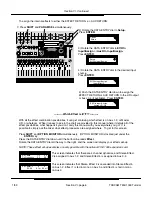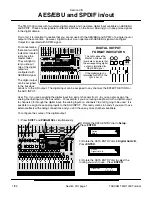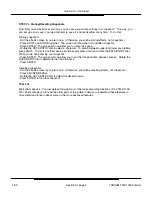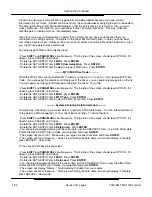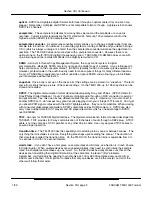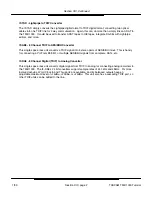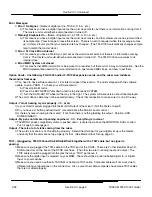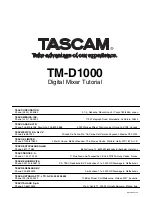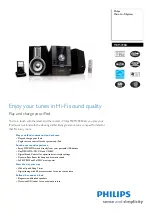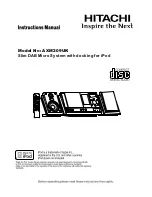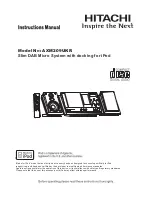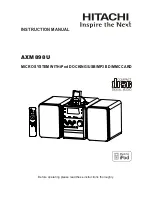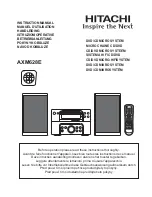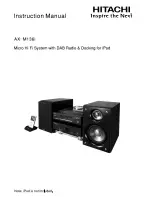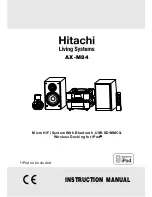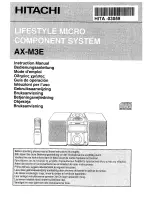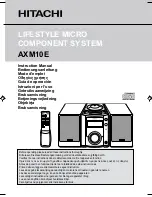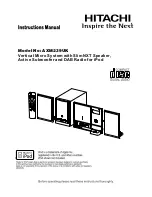
Section XIII, Continued
Section XIII, page 3
optical - SPDIF and Lightpipe digital formats both travel through an optical cable (Only one at a time,
please.) Remember, Lightpipe and SPDIF are not compatible formats, though. Lightpipe is 8 channels,
SPDIF is 2 channels.
sample rate - The sample rate indicates how many times per second the amplitude of a sound is
recorded. Current typical standards are the CD standard 44.1kHz (44,100 samples/second) or the
higher resolution 48kHz (48,000 samples/second.)
sample rate converter - A sample rate converter simply allows you to change a digital signal from one
sample rate to another. For instance, if a recording system is running at 48kHz and you need to bring a
CD in (which is always running at 44.1kHz) then the sample rate converter will make the adjustment in
real time. The TM-D1000 does not come stock with a sample rate converter. However, there is an
optional one on the IF-TD1000 digital I/O expansion option. TASCAM’s CD-RW5000 does come with
one, allowing sessions recorded at 48kHz to be digitally recorded to CD.
SCMS - Acronym for Serial Copy Management System, the copy control system in digital
communication. Basically, SCMS only lets you make one digital copy of a master. It was introduced to
help control piracy on the consumer market. (SCMS is typically found on consumer grade equipment.)
However, professionals in the audio industry need to make copies of things for many different reasons.
So, most TASCAM pro equipment can either override or ignore SCMS code, allowing you to distribute
your masterpiece without restriction.
snapshot - Once a mix is set up on the mixer, all of the settings can be stored in a “snapshot.” The term
came from simply taking a picture of the mixer settings. On the TM-D1000, up to 128 snapshots can be
stored and recalled.
SPDIF - The digital communication format standard developed by Sony and Philips. (SPDIF stands for
Sony/Philips Digital Interface.) It puts 2 channels of digital audio through an RCA connector (coaxial) or
an optical cable. Yes, this one has two different cables that can carry it. (Obviously, it must connect to
another SPDIF port... don’t expect any great results plugging it into your vintage 1973 8 track.) Don’t get
an optical SPDIF signal confused with the ADAT lightpipe either... they’re not compatible. When working
with consumer digital players/recorders, SPDIF sometimes carries SCMS code on it. SPDIF can also
carry track number data for DAT players and CD players/recorders which is one advantage to SPDIF
over AES/EBU.
TDIF - Acronym for TASCAM Digital Interface. The digital communication format standard developed by
TASCAM. TDIF provides for 2 way communication of 8 channels of audio through a DB25 plug. A TDIF
cable is not the same as a SCSI, parallel, or any other 25 pin cable. Use only approved TDIF cables to
ensure proper operation.
transition time - The TM-D1000 has the capability of crossfading into a scene or between scenes. (The
only thing that crossfades is volume. Everything else snaps upon recalling the scene.) The duration of
that crossfade is called the transition time. On the TM-D1000, the transition time is adjustable from 0 to
10 seconds in 1/10th of a second intervals.
word clock - (If you don’t have a firm grasp on sample rates and bit rates, see Section II - Crash Course
in Digital Audio.) When multiple devices are connected digitally, they need to synchronize their sample
rates. Each digital sample makes up one “word”. So, the word clock basically makes sure that all the
devices are transmitting their digital information at the same time to prevent “jitter” problems.
Remember, you’ll probably be needing to synchronize 44,100 or 48,000 samples every second from
EACH source channel. It is important to realize that only one device can be the master, and all of the
others will follow that master.
TASCAM TM-D1000 Tutorial
1/99

